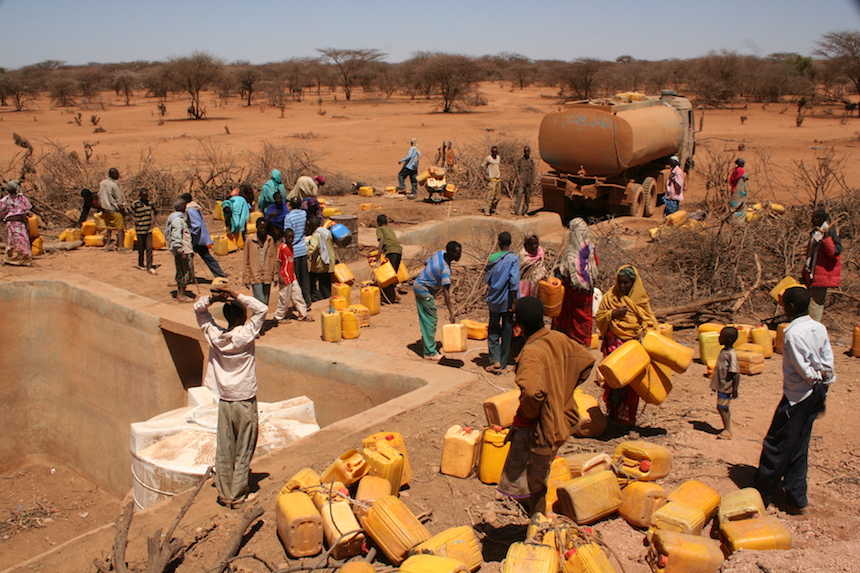
More than 1,400 new dams or water diversion projects are planned or already under construction and many of them are on rivers flowing through multiple nations, fueling the potential for increased water conflict between some countries.
A new analysis commissioned by the United Nations uses a comprehensive combination of social, economic, political and environmental factors to identify areas around the world most at-risk for “hydro-political” strife. This river basins study was part of the UN’s Transboundary Waters Assessment Program.
Researchers from the United States, Spain and Chile took part in the analysis, which has been recommended by the U.N. Economic Commission for Europe as an indicator for the U.N.’s sustainable development goals for water cooperation.
Results of the study have just been published in the journal Global Environmental Change.
OSU says that the analysis suggests that risks for conflict are projected to increase over the next 15 to 30 years in four hotspot regions – the Middle East, central Asia, the Ganges-Brahmaputra-Meghna basin, and the Orange and Limpopo basins in southern Africa.
Additionally, the Nile River in Africa, much of southern Asia, the Balkans in southeastern Europe, and upper South America are all areas where new dams are under construction and neighboring countries face increasing water demand, may lack workable treaties, or worse, haven’t even discussed the issue.
“If two countries have agreed on water flow and distribution when there’s a dam upstream, there usually is no conflict,” said Eric Sproles, an Oregon State University hydrologist and a co-author on the study. “Such is the case with the Columbia River basin between the United States and Canada, whose treaty is recognized as one of the most resilient and advanced agreements in the world.
“Unfortunately, that isn’t the case with many other river systems, where a variety of factors come into play, including strong nationalism, political contentiousness, and drought or shifting climate conditions.”
The conflict over water isn’t restricted to human consumption, the researchers say. There is a global threat to biodiversity in many of the world’s river systems, and the risk of species extinction is moderate to very high in 70 percent of the area of transboundary river basins.
Asia has the highest number of dams proposed or under construction on transboundary basins of any continent with 807, followed by South America, 354; Europe, 148; Africa, 99; and North America, 8. But Africa has a higher level of hydro-political tension, the researchers say, with more exacerbating factors.
The Nile River, for example, is one of the more contentious areas of the globe. Ethiopia is constructing several dams on tributaries of the Nile in its uplands, which will divert water from countries downstream, including Egypt. Contributing to the tension is drought and a growing population more dependent on a water source that may be diminishing.
“When you look at a region, the first thing you try to identify is whether there is a treaty and, if so, is it one that works for all parties and is flexible enough to withstand change,” Sproles said. “It’s easy to plan for water if it is the same every year – sometimes even when it’s low. When conditions vary – and drought is a key factor – the tension tends to increase and conflict is more likely to occur.”
In addition to environmental variability and lack of treaties, other factors leading to conflict include political and economic instability, and armed conflict, the analysis shows.
Sproles said one reason the Columbia River Basin treaty between the U.S. and Canada has worked well is the relative stability of the water supply. In contrast, climate models suggest that the Orinoco River Basin in northern Brazil and the Amazon Basin in upper South America may face drier conditions, which could lead to more strife.
Sproles is a courtesy faculty member in Oregon State’s College of Earth, Ocean, and Atmospheric Sciences, where he received his doctorate.
More information on the United Nations Transboundary Waters Assessment Program is available at: http://www.geftwap.org/.
— Read more in L. De Stefano et al., “Assessment of transboundary river basins for potential hydro-political tensions,” Global Environmental Change 45 (13 July 2017): 35-46 (DOI: 10.1016/j.gloenvcha.2017.04.008); and Jacob D. Petersen-Perlman et al., “Hydropolitics: Transboundary River Basins and Political Tensions,” Sustainable Security (13 July 2017)

